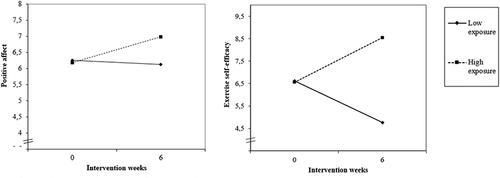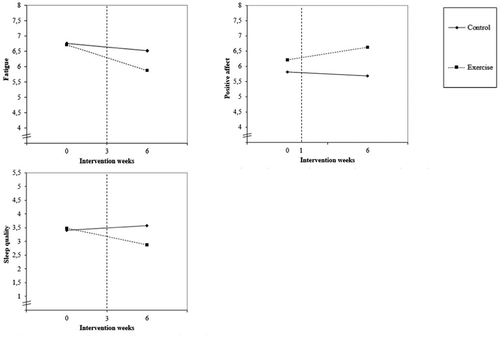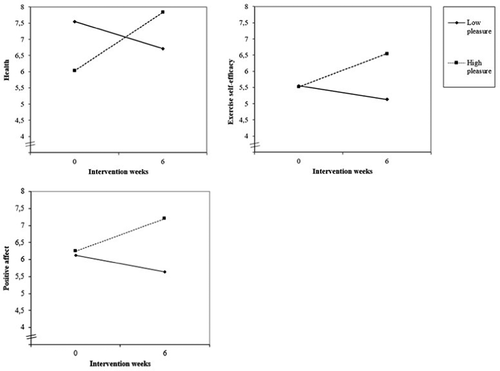Figures & data
Table 1. Intra-class correlations (ICC), means (standard deviations) of health and well-being outcomes at each time point
Table 2. Means (standard deviations) of exposure to exercise and exercise experiences for each time point (only participants in the exercise condition)
Table 3. Fit statistics and estimates (SE) of linear models predicting health and well-being outcomes over time as a function of exposure (only participants in the exercise condition)
Figure 1. Positive affect and exercise self-efficacy over time under low exposure (one exercise session a week) and high exposure (three exercise sessions a week)

Table 4. Fit statistics and estimates (SE) of linear models predicting health and well-being outcomes over time as a function of condition (exercise vs. control)
Figure 2. Health and well-being trajectories for exercisers and controls (dotted vertical line represents minimal exposure; the point in time at which exercisers and controls significantly differ from each other)

Table 5. Fit statistics and estimates (SE) of linear models predicting health and well-being outcomes over time as a function of pleasure (only participants in the exercise condition)
Figure 3. Health and well-being trajectories for low pleasure (report mark ‘4ʹ) and high pleasure (report mark ‘8ʹ)

Table 6. Fit statistics and estimates (SE) of linear models predicting health and well-being outcomes over time as a function of psychological detachment (only participants in the exercise condition)
Table 7. Estimates (SE) predicting health and well-being outcomes over time as a function of effort (only participants in the exercise condition)
Table 8. Synthesis of evidence
